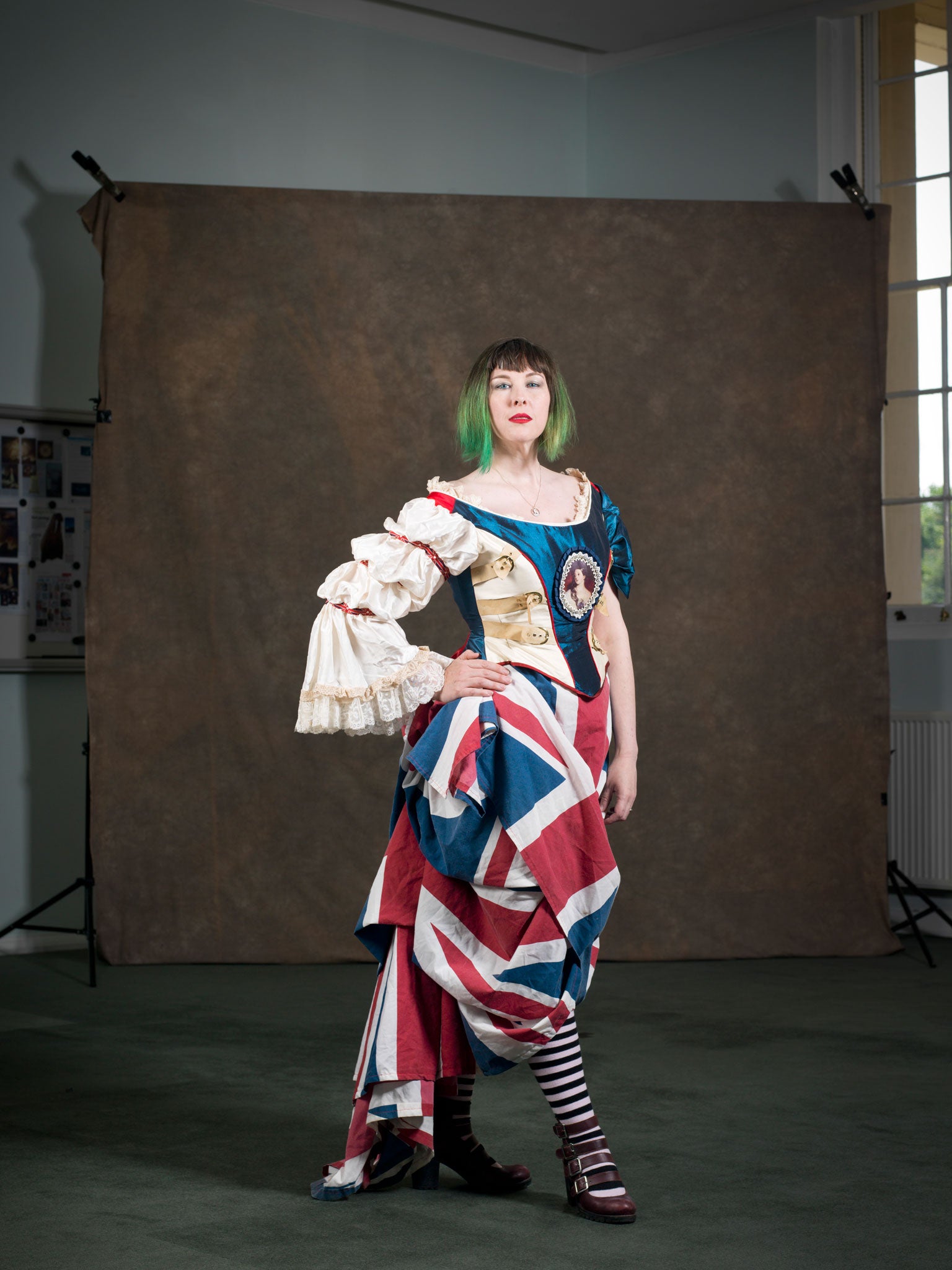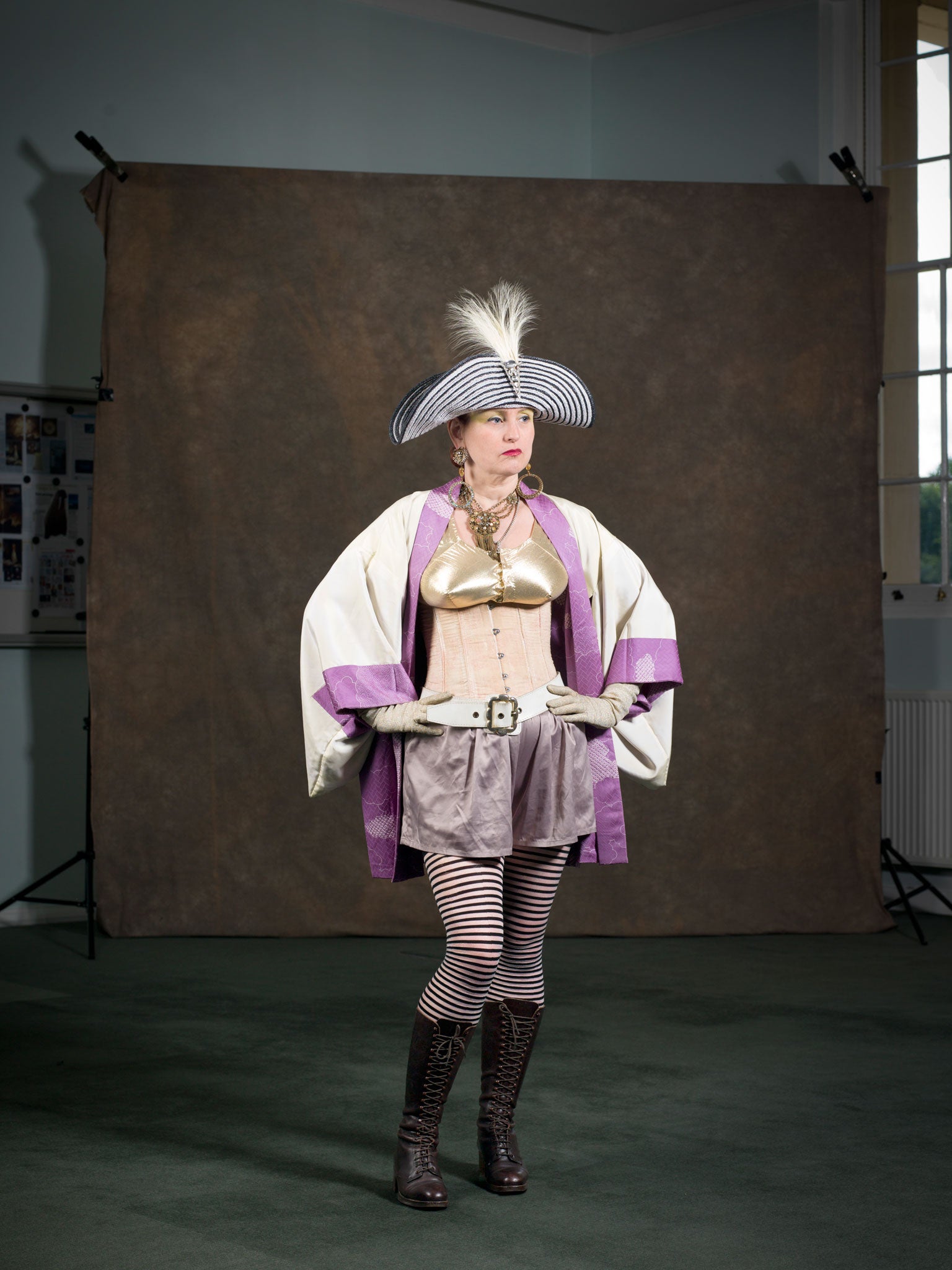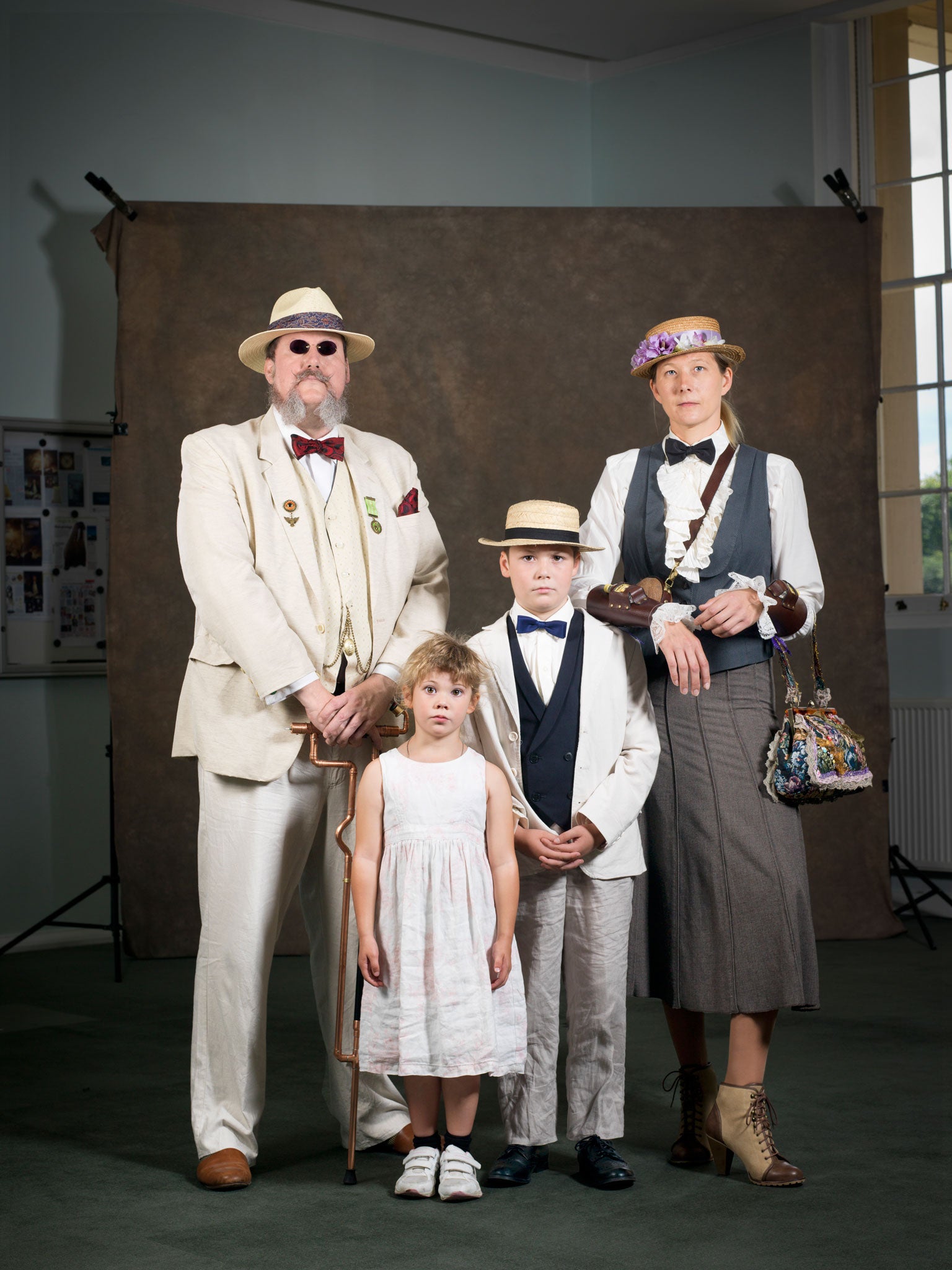Weekend at the Asylum: Europe's biggest steampunk convention heads to Lincoln
It began in the 1980s as a novelty. Now steampunk is one of our biggest, and most ingenious, sub-cultures. As its retro-futurist dreamers prepare to descend on Lincoln for Europe's biggest convention, Jake Wallis Simons discovers how Victorian ray guns and the martial art of biscuit dunking are precisely what the 21st century needs

Your support helps us to tell the story
From reproductive rights to climate change to Big Tech, The Independent is on the ground when the story is developing. Whether it's investigating the financials of Elon Musk's pro-Trump PAC or producing our latest documentary, 'The A Word', which shines a light on the American women fighting for reproductive rights, we know how important it is to parse out the facts from the messaging.
At such a critical moment in US history, we need reporters on the ground. Your donation allows us to keep sending journalists to speak to both sides of the story.
The Independent is trusted by Americans across the entire political spectrum. And unlike many other quality news outlets, we choose not to lock Americans out of our reporting and analysis with paywalls. We believe quality journalism should be available to everyone, paid for by those who can afford it.
Your support makes all the difference.The squid is pink, glassy-eyed and unnerving. And it is perched on the head of a 55-year-old lecturer.
“It’s actually a kraken,” says Heather Rosa. “A monster from the deep. When I make hats – did I mention that I make my own hats? – they are often inspired by Jules Verne and HG Wells.” She adjusts the plastic creature and grins. By her own admission, Rosa’s day-to-day life is that of “the boring university academic”. By night, however – or rather, at the weekends – she transforms into her alter ego, the Spy Mistress-General of the Royal Dirigible Corp.
This means wearing flamboyant, Victorian-inspired costumes: in addition to her kraken hat, today she is wearing a corset and voluminous black bustle while presiding over tea duels – of which more later. It also means being a member of the Grand Order of the Muff, a society dedicated to the 19th-century penchant for hand-warmers.
“Yoo hoo!” she calls. “Yoo hoo!” Another woman, dressed in an oversized Victorian frock in Union Jack print, complemented by striped leggings and blue-streaked hair, comes towards us, smiling in an elegant sort of way. We are introduced: her name is Emilly Ladybird (real name Jema Hewitt).
“We actually have a lot to say about the modern world, recycling, upcycling, multiculturalism and inclusion,” says Rosa. “Steampunks are always really nice people, really eccentric people, and everybody is welcome, whoever you are.
“A lot of it is about social justice and freedom of expression. And eating crumpets.”
Welcome to the world of steampunk, a social sub-culture that started in the 1980s and is now mushrooming all over the world.
Loosely speaking, “steampunk” refers to a mash-up of 19th-century ephemera and science fiction, underpinned by 21st-century liberal values, to create a “retro-futurist vision of Victorian England”. It straddles music, visual art, couture, performance, comedy, pseudo- science, and especially fiction.
The term was coined in 1987, in a letter by the American author KW Jeter, who was trying to pin down the growing trend for science fiction set in the steam-driven Victorian period. It is a parody of the term “cyberpunk”, a genre of k fantasy fiction set in the near-future; and opinions are divided as to whether Jeter was being serious. “I think Victorian fantasies are going to be the next big thing, so long as we can come up with a fitting collective term,” he wrote. “Something based on the appropriate technology of the era; like ‘steam-punks’, perhaps.”
The name stuck. And the movement grew. In September, the biggest steampunk gathering in Europe, Weekend at the Asylum, will take place in a former Victorian lunatic asylum in Lincoln, which has a large steampunk community. (It was recently voted, by online readers of The Steampunk Chronicle, the most steampunk city in the world.) About 2,000 steampunks are expected to attend, more than ever before.
Devotees of steampunk tend to take inspiration from the works of Jules Verne, HG Wells, H Rider Haggard, Arthur Conan Doyle and others. Then, in a variety of ways, they seek to create a parallel to Victorian England in which women can be adventurers, colonialism never happened, time travel is possible, and steam-powered spaceships can travel the universe.
“We throw out the racism and sexism of Victorian novels, and make our own, more splendid interpretations,” says Rosa – or, rather, the Spy Mistress-General. “It’s a sort of subversion, really, a good-natured satire, mixed with the aesthetic appeal of pith hats and corsets.”
But ask any steampunk to define the culture in anything more than general terms, and they will struggle. “It’s a constantly evolving thing,” says Ladybird. “In the early days it was all about high Victoriana. Then there was a fad for steam-Westerns, cowboys versus aliens and all that. These days, post-apocalyptic steampunk is very popular. But it’s all about taking the best bits of the Victorian age and making them into a future that never was.”
At the Steampunk Summer Fete, which took place earlier this month at the Queen’s House in Greenwich, south London, a group of splendid people introduced interested members of the public – the “steam-curious” – to their scene. Meanwhile, over the road and up the hill, at the Royal Observatory, there was a steampunk exhibition that will continue to show until next year. Longitude Punk’d contains work by nine steampunk artists, who were commissioned by Royal Museums Greenwich to create art inspired by the inventions presented to the Board of Longitude, which encouraged advances in navigation between 1714 and 1828. There is also a Fantastical Steampunk Tea Museum at the Cutty Sark.
“We are commemorating the 300th anniversary of the Longitude Act of 1714, which offered a reward for anyone who could find a method to determine a ship’s longitude,” says Herr Döktor (real name Ian Crichton), one of the contributing artists, who is dressed in a wing collar, frock coat and top hat. “This exhibition, which features things like whirling, fiery balloons all along the meridians, is our slightly mad take on it. We blur the line between fact and fiction.”

The 45-year-old Döktor is one of steampunk’s best-known “makers”. An accomplished metalworker (for his day job, he builds exhibitions for museums), he is noted particularly for the range of beautiful, steam-powered “ray guns” that he makes at his workshop at home.
A variety of aesthetic symbols are associated with steampunk, including brass goggles, mechanical clocks, automatons, airships and telescopes. All encapsulate a spirit of naive, tongue-in-cheek sci-fi in a non-digital age.
“Steampunks are usually creative, but they don’t tend to focus on one discipline,” says Ladybird. “People aren’t just writers, they’re also artists, tea-makers, musicians. I’m a costume designer, but I’m making absinthe fairy cakes at the Edinburgh Food Festival this year. And the recipe comes from my steampunk cookbooks.”
The Spy Mistress adds: “I got into it through the fashion. I’ve always been a fan of Vivienne Westwood. It basically allowed me to be mad. I was a punk back in the day, and this allows me to come back to it, to grow old boldly.”
According to recent surveys, steampunk is most popular among the 15-to-25 and 35-to-45 age ranges. But older and younger people are often involved, too. “You see a lot of families with small children,” says the Spy Mistress. “And there’s an elderly and disabled posse who have steampunked-up their mobility scooters.”
Several times a year, all over the country, steampunks hold events similar to this one, at which they socialise, sell things they have made, stage book readings and concerts, and play games such as tea duelling (again, more later), umbrella jousting and the very dangerous sport of corset limbo. In September, there will be a mass gathering in Lincoln, like a pilgrimage.

Indeed in some ways, and to some of its followers, steampunk is almost a religion. It may not have any central authority, but it has its own music, mode of dress, community, literature and code of beliefs. It even has its own commandments, which are threefold: be splendid in your interactions with others; be splendid in how you present yourself; and be splendid in everything you create.
These diktats were not handed down by a metaphysical god, but rather were codified by a veteran steampunk called Major Thadeus Tinker. His real name is John Naylor, he is 50, and it is he who instituted the Weekend at the Asylum. “The first year, in 2009, I was blown away because 432 people came when I had k been expecting 200,” he says. “But this year we’re going to have 10 times that number. Steampunks come from all over the world – from Australia, South America, the United States, Canada, Japan, all over. We also have coach-loads of photographers turning up to take pictures of all the splendid people.”
The event’s highlights will include a faux-military parade (and a minute’s silence to remember genuine casualties of war); a rocket-pack race, in which participants dash around Lincoln Castle with home-made contraptions (that don’t work) on their backs; burlesque and fashion shows; and literary events.
And then comes the tea duelling, which is another aspect of steampunk culture that was invented by Major Tinker.

“It’s a strange artform that’s going from strength to strength,” he says. “People play it all over the world now. It’s basically a game of brinkmanship. Two players dunk a malted milk biscuit in tea – no chocolate is allowed, because of the disintegration index – and hold it up. If you eat it before your opponent, or your biscuit collapses, you lose. It’s a very civilized way of resolving disputes.”
Tea duels encapsulate the essential gentleness and good humour of steampunk. In the final analysis, the root of its appeal, Major Tinker says, lies in disillusionment with the coarsened manners and digitisation of modern life, coupled with a desire to let your hair down and, well, be silly.
“A little while ago, a small group of us were walking in Camden Town late at night in our full splendid dress, with toppers, canes, and so on,” he says. “A gang of hoodies was coming the other way, and it was a bit tense.” But instead of reacting with aggression, the leader of the hoodie gang said: “You’re rocking that look!” And both parties all ended up having “a very jolly time”.
“Steampunk is non-tribal, eccentric and non-threatening,” Major Tinker muses. “We just return to old-fashioned good manners, without returning to old-fashioned values. There’s very little to dislike in that.”
Weekend at the Asylum take places in Lincoln from 12 to 14 September (steampunk.synthasite.com). Longitude Punk’d is at the Royal Observatory Greenwich, London SE10, to 4 January 2015 (rmg.co.uk)
Join our commenting forum
Join thought-provoking conversations, follow other Independent readers and see their replies
Comments